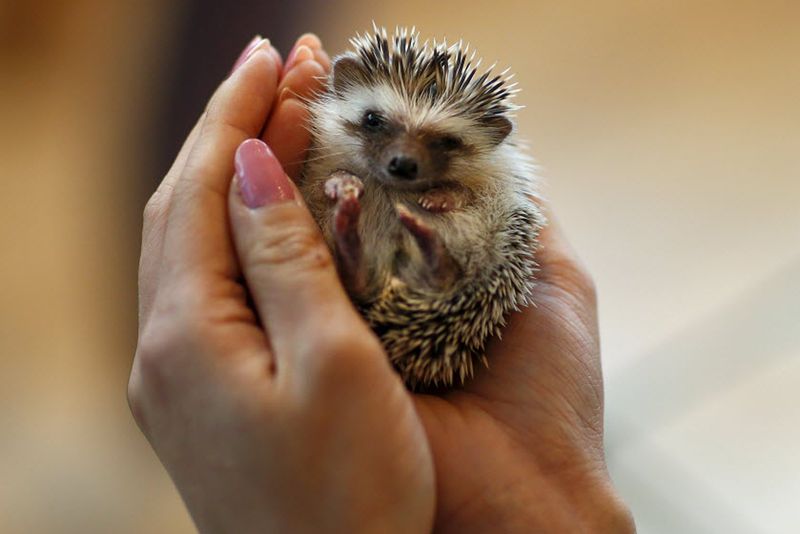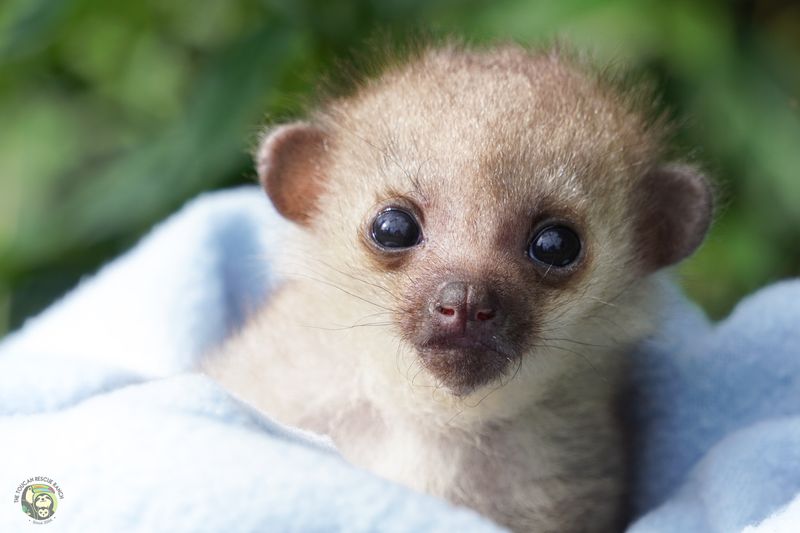📖 Table of Content:
For those seeking a truly unique addition to their household, various fascinating creatures await, each bringing its own charm and intrigue.
Imagine the vibrant hues of a chameleon blending effortlessly with its surroundings or the endearing antics of a sugar glider gliding gracefully through the air. These extraordinary animals can offer companionship that’s as captivating as it is unconventional.
However, caring for an exotic pet comes with its own set of challenges and responsibilities. From understanding their specialized diets to meeting their unique habitat needs and navigating legal considerations, preparation is key to ensuring a fulfilling relationship.
Join us as we delve into the world of ten remarkable exotic pets you can legally own, and that could become the next cherished member of your family.
10. Chinchilla
Chinchillas are delightful, small rodents known for their incredibly soft fur and playful personalities. They originate from the Andes Mountains in South America, where they are adapted to live in cold, dry environments.
Chinchillas are crepuscular, meaning they are most active during dawn and dusk, making them excellent pets for those with a busy daytime schedule. These animals require a spacious cage filled with toys for mental stimulation and a dust bath to keep their fur clean.
Due to their specific environmental needs, it’s crucial to maintain a cool, dry home environment for them. Chinchillas are social creatures, often thriving in pairs or small groups, so consider adopting more than one. Regular handling helps them build trust with their owners, leading to a rewarding and interactive relationship.
With proper care, chinchillas can live up to 15 years, providing long-term companionship.
9. Fennec Fox
The fennec fox is a captivating exotic pet known for its enormous ears and playful demeanor. Native to the Sahara Desert, these small foxes have adapted to the harsh desert climate with their thick fur and nocturnal lifestyle
Their large ears not only provide exceptional hearing but also help dissipate heat. Fennec foxes require a secure outdoor enclosure with plenty of room to dig and explore, replicating their natural habitat.
Fennec foxes can be trained to walk on a leash, providing an opportunity for exercise and bonding. However, their wild instincts mean they might not be suitable for homes with small children or other small pets.
With proper care, including a diet rich in protein and regular veterinary check-ups, fennec foxes can be delightful and engaging companions with a lifespan of up to 14 years.
8. Axolotl
Axolotls, often called “Mexican walking fish,” are unique amphibians native to Mexico. Unlike other amphibians, axolotls remain in their aquatic larval stage throughout their lives, retaining their gills and swimming capabilities.
Their unique appearance, with feathery gills and a perpetual smile, makes them popular in the pet trade. Axolotls require a well-maintained aquarium with clean, cool water and plenty of hiding spaces to thrive.
They are solitary creatures, and housing more than one requires careful consideration to prevent stress and aggression.
7. Sugar Glider
Sugar gliders are small, nocturnal marsupials originally from Australia and New Guinea. Their ability to glide between trees makes them a unique and entertaining pet choice.
They are best kept in pairs or small groups and need a spacious, vertical enclosure to mimic their natural arboreal habitat.
Given their nocturnal nature, sugar gliders are most active at night, making them suitable for night owls or those with evening schedules. With attentive care, they can live for 10-15 years, offering companionship and joy to their owners.
6. Hedgehog
Hedgehogs are charming, small mammals that have gained popularity as exotic pets due to their unique appearance and manageable size.
Native to Africa, they are nocturnal creatures with a solitary lifestyle, making them suitable for single-pet households. Hedgehogs require a spacious enclosure with hiding spots, wheels for exercise, and a consistent temperature to ensure their comfort.
Their diet should include high-quality cat food, insects, and occasional fruits or vegetables, providing necessary nutrition.
5. Kinkajou
Kinkajous, also known as “honey bears,” are arboreal mammals native to Central and South American rainforests. With their prehensile tails and curious nature, kinkajous are engaging and playful pets for those who understand their unique needs.
They require a large, enriched environment that mimics their natural habitat, complete with climbing opportunities and interactive toys.
Kinkajous are nocturnal, active primarily at night, which suits owners with similar schedules. Due to their social nature, they thrive on companionship and interaction with their human caregivers.
However, prospective owners must be mindful of local regulations, as kinkajous may not be legal in all areas.
4. Capybara
Capybaras are the world’s largest rodents, native to South America, known for their gentle and sociable nature. These semi-aquatic animals require ample space and a body of water to swim in, making them suitable for owners with large properties.
They are best suited to outdoor living environments where they can graze and swim freely. Owners should be aware of local laws and ensure that keeping capybaras is compliant with regulations.
With proper care and socialization, capybaras can live up to 10 years, offering unique companionship and insight into the lives of these fascinating creatures.
3. Serval
The serval is a strikingly beautiful wild cat native to Africa, admired for its spotted coat and long legs. Known for their hunting prowess, servals are powerful and agile, requiring a secure outdoor enclosure that provides space to roam and exercise.
They thrive in environments that mimic their natural savanna habitats, with tall grasses and hiding spots.
Servals require a diet rich in raw meat and essential nutrients to maintain their health. Although they can form strong bonds with their human owners, servals retain many wild instincts, making them challenging pets for inexperienced owners.
2. Skunk
Skunks, often associated with their potent spray, have become popular exotic pets due to their intelligence and playful nature. Domesticated skunks have their scent glands removed, making them suitable for home living.
Skunks thrive on a varied diet consisting of vegetables, fruits, and specially formulated skunk food, ensuring balanced nutrition.
Regular socialization and gentle handling from a young age are essential to fostering a strong bond with their human companions. Skunks are known for their inquisitive nature, providing endless entertainment for their owners.
1. Tarantula
Tarantulas are fascinating arachnids that make unique and low-maintenance pets for those interested in exotic creatures. With over 800 species, they come in a variety of colors and sizes, each offering a unique pet-keeping experience.
They typically require a terrarium with hiding spots, a substrate for burrowing, and a shallow water dish to provide a suitable living environment.
Their diet mainly consists of live insects such as crickets and mealworms, requiring minimal care and attention.
They can be handled occasionally, but many owners enjoy watching their intriguing behaviors from a distance. It’s important to note that some species have more potent venom than others, so careful handling and species research are essential.










